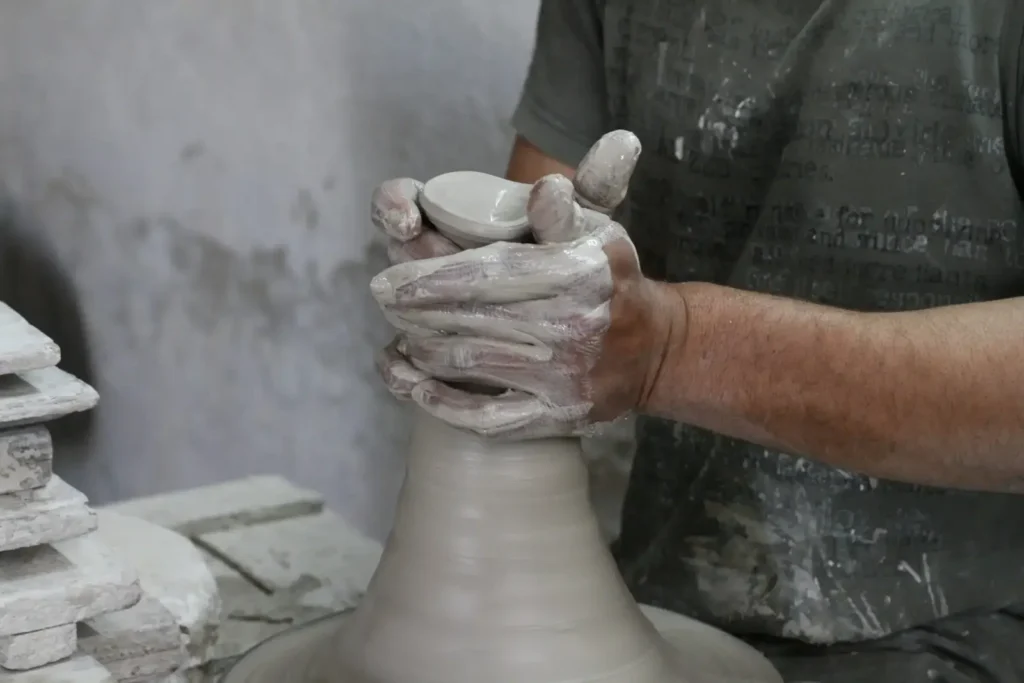Artisan Techniques, Handmade Product Spotlights
The art of Moroccan pottery: techniques and traditions
Moroccan pottery is a centuries-old art form that combines functionality with beauty, deeply rooted in the country’s rich cultural heritage. Let’s delve into the intricate techniques and traditions that make Moroccan pottery so unique and cherished worldwide.
The History of Moroccan Pottery
The origins of Moroccan pottery date back to ancient times, with influences from Berber, Arab, and Andalusian cultures. Over the centuries, Moroccan potters have perfected their craft, creating distinctive styles that vary by region. Fez, Safi, and Meknes are renowned pottery centers, each with its unique characteristics and techniques.
Techniques and Craftsmanship
1.Hand Building: Moroccan potters often start with raw clay, shaping it by hand using traditional methods. Hand building includes techniques such as coiling and pinching, allowing artisans to create intricate shapes and designs that are unique to Moroccan pottery.
2. Wheel Throwing:The potter’s wheel, introduced to Morocco in the 16th century, revolutionized pottery making. Wheel throwing enables potters to create symmetrical and refined pieces. The process requires skill and precision, with the potter centering the clay on the wheel and shaping it with deft movements.
3. Glazing and Decoration:Moroccan pottery is famous for its vibrant colors and intricate patterns. Artisans use natural pigments to create glazes, which are applied to the pottery before firing. Common colors include cobalt blue, turquoise, and green, reflecting the Mediterranean and Saharan landscapes. Decorative techniques such as sgraffito (scratching designs into the clay) and geometric patterns are often used, showcasing the artisan’s creativity and skill.
4. Firing: Once decorated, the pottery is fired in a kiln, a process that hardens the clay and sets the glaze. Traditional wood-fired kilns are still used in many regions, adding a unique character to each piece. The firing process is critical, as it affects the durability and finish of the pottery.
Cultural Significance
Moroccan pottery is more than just art; it plays a vital role in daily life and cultural rituals. From cooking tagines to serving tea, pottery items are integral to Moroccan hospitality and cuisine. Additionally, pottery is often used in religious and ceremonial contexts, symbolizing purity and tradition.
Modern Influences and Sustainability
While preserving traditional methods, contemporary Moroccan potters are also embracing modern influences and sustainable practices. Many artisans now incorporate eco-friendly materials and techniques, ensuring that the craft continues to thrive in a changing world. Collaborations with international designers have also brought Moroccan pottery to a global audience, blending traditional aesthetics with modern design sensibilities.
The art of Moroccan pottery is a testament to the country’s rich cultural tapestry and the enduring skills of its artisans. By preserving these techniques and traditions, Moroccan potters continue to create beautiful, functional art that resonates with people around the world. Whether you’re a collector or simply an admirer, Moroccan pottery offers a glimpse into a world where art, culture, and history intertwine.
Explore More
Discover the exquisite world of Moroccan pottery and more on our Handcrafted Arts of Morocco website. Join us in celebrating and supporting the artisans who keep this timeless tradition alive.


